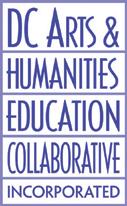
Opera Look-In
Michelle Cross Fenty, Honory Chair


Opera Look-In
Michelle Cross Fenty, Honory Chair
Opera offers a unique teaching opportunity – to explore music through many different disciplines from literature and drama to history and art. This guide and the accompanying CDs prepare students for the Opera Look-In and can also be used as stand-alone classroom activities and resources for teachers. For applicable National Standards, please contact Washington National Opera at 202.448.3465 or at education@dc-opera.org.
Your students received a student guide to help them prepare for the Opera Look-In. The student guide provides musical and historical information about Don Giovanni. Additionally, there are challenging questions incorporated into the student guide to assist your students’ critical thinking skills. These questions can lead to in-class discussions or provide topics for classroom assignments.
Based on the legend of Don Juan with a libretto by Lorenzo da Ponte and music by Wolfgang Amadeus Mozart, Don Giovanni takes center stage for the 2007 Opera Look-In. You and your students will experience demonstrations of musical and technical special effects, as well as a performance of scenes with full staging, costumes, and orchestra. The performance will be sung in Italian with English supertitles projected above the stage. The estimated running time for the Opera Look-In: Don Giovanni is 50 minutes with no intermission.
The story of Don Juan is centered around a fictional character who was a nobleman during the 18th century in Seville, Spain. Although it is not clear where this legendary character originated, during the Golden Age of Spanish drama, he is first documented in a play by Tirso de Molina (the pen name for the Spanish monk Gabriel Téllez). The basic story describes Don Juan, a womanizer, who seduces a young woman of a noble family and kills her father when he attempts to defend his daughter’s honor. Later, Don Juan encounters the dead father’s statue in the cemetery and mockingly invites him to dinner, an invitation the statue accepts. When the statue arrives for dinner, he extends his hand to greet Don Juan and drags him to Hell for his unrepentant sins.
Don Juan was always the villain of the story, but his character became more romanticized around Mozart’s time. Lorenzo da Ponte’s close friend, Giacomo Casanova, came to Prague for the premiere of Don Giovanni. It is believed that he, an accomplished writer and womanizer himself, offered suggestions to da Ponte as he wrote the libretto for Don Giovanni. History suggests that this contributed to the portrayal of Don Juan as a less villainous character. Since then, Don Juan has become increasingly romanticized into a superhuman character without guilt.
---Jean-Baptiste’s (Molière) play Dom Juan, ou le Festin de Pierre (1665)
--Carlo Goldoni’s play Don Giovanni Tenorio ossia Il dissoluto (1736)
--Christoph Willibald Gluck’s ballet Don Juan (1761)
--Lorenzo de Ponte and Wolfgang Amadeus Mozart’s opera Don Giovanni (1787)
--Lord Byron’s epic poem Don Juan (1821)
--Alexandre Dumas’ play Don Juan de Marana (1831)
--Richard Strauss’ symphonic poem Don Juan (1888)
--Guillaume Apollinaire’s novel Les exploits d’un jeune Don Juan (1907)
--Silent film starring John Barrymore Don Juan (1926)
--Film starring Johnny Depp and Marlon Brando Don Juan DeMarco (1995)
Throughout the opera, Leporello is faced with the dilemma of whether he will sacrifice his personal morals to serve his boss and friend, or if he is willing to contradict his boss and lose his job. Use the following points in the story to discuss this dilemma with your class. Did Leporello make wise decisions?
Act I: Leporello is asked to distract Masetto so that Don Giovanni can flirt with Zerlina. When Zerlina cries for help, Don Giovanni blames Leporello.
Act II: Don Giovanni asks Leporello to switch clothes with him so that he can more effectily flirt with Elvira’s maid. Elvira, who is searching for Don Giovanni to punish him, now believes that Leporello is Don Giovanni.
Wolfgang Amadeus Mozart lived and composed music during the climax of political and social changes of 18th century the Empress of the Holy Roman Empire, Maria Theresa and died just two years before Marie Antoinette, the Queen
Maria Theresa was born in 1717, and was the eldest daughter of Charles VI, Emperor of the Holy Roman Empire. Austria and Hungary after a succession law was changed. During her 40-year reign, Maria Theresa was one of the most the “Enlightened Absolutist,” Maria Theresa initiated liberal policies such as universal education for children and abolished stern mother to 16 children including Joseph II, Emperor of the Holy Roman Empire, and Maria Antonia, later Marie
Marie Antoinette was never popular among her French subjects and was more concerned about social events than Antoinette became a mother, she was less extravagant, but it was too late. On July 14, 1789, French citizens stormed was forced to leave the palace of Versailles and return to Paris. Confined to isolation, the royal family sought assistance The escape failed and the royal family was forced back to Paris. In September 1792, the National Convention declared officially abolished. After a brief trial, Marie Antoinette was convicted of treason and was guillotined on October Explore the Geography of Europe
• Mozart traveled across Western Europe as a child prodigy. With your students, explore the geography of each
• Explore the means of transportation in the 18th century and how Mozart might have traveled to each destination.
• Explore the kings and queens of each country he visited such as France, England, and Austria-Hungary.

After Don Giovanni premiered in Prague, Mozart revised his opera. When the opera opened in Vienna, the most important change was the elimination of the epilogue and ending the opera when Don Giovanni is dragged to Hell. Some people think that the epilogue is insincere while others think it is intended to be serious. Review the epilogue with your students and have them debate which ending they prefer.
Have students write a short review of the opera. What was their favorite part of the Opera Look-In? Are there any characters with whom they identify or do they know someone in real life who is similar to any of the characters? Are there any characters that they dislike? Have students compare the ideas in their reviews with those of other students.
Have your students design a set for Don Giovanni, either setting it in Seville, Spain, or in a city of their choice. Then have students compare and contrast their visions of the set to what that they saw at the Opera Look-In.
1787 was a big year for Don Giovanni and the newly formed United States of America. Don Giovanni premiered in Prague, and the United States Constitution was adopted in 1787. Have your students research what other historical events took place in 1787.
century Europe. As a child prodigy, Mozart amazed Queen of France, was guillotined.
Maria Theresa became heir to the throne of most powerful women of her time. Often called abolished serfdom. Maria Theresa was also a Marie Antoinette the Queen of France.
than the economic crisis in France. After Marie stormed the Bastille and in October the royal family assistance from Marie Antoinette’s brother Joseph II. declared France a republic and the monarchy was 16, 1793. each country he visited. destination.
From reading the synopsis of Don Giovanni, you will know the story of Mozart’s opera. With the Commentary on CD we have provided, you can share with your students the wonderful music of the opera. To assist you, the CD is narrated by musicologist, Saul Lilienstein. Mr. Lilienstein offers a brief explanation of what is happening during each selection as well as some guided listening points to assist in your preparation for the Opera Look-In: Don Giovanni.
Specific tracks that will be helpful in your preparation are listed below. You and your students will be hearing music from the following tracks at the Opera Look-In performance. The appropriate track number and timings are listed below:
Track 1 – Introduction and Overture (2:59)
Track 2 – Overture continued (1:14)
Track 3 – Act One: Outside the house of Il Commendatore (7:15)
Track 4 – Donna Anna returns with Don Ottavio (2:00)
Track 15 – Finale to Act One (5:40)
Track 20 – The cemetery, the statue, the invitation (6:28)
Track 22 – Don Giovanni’s banquet (6:10)
Track 23 – The Stone Guest arrives (7:19)
Books
Hoyle, Martin. The World of Opera: Mozart Omnibus Press, 1996.
Parouty, Michel. Mozart: From Child Prodigy to Tragic Hero Harry N. Abrams, Inc., 1993.
Woodford, Peggy. The Illustrated Lives of the Great Composers: Mozart Omnibus Press, 1990.
Don Giovanni, Deutsche Grammophon, 1967.
Don Giovanni, EMI Classics, 2002.
Amadeus, Forman, Milos, Director. Warner Home Video, 1984.

EDUCATION AND COMMUNITY PROGRAMS ARE MADE POSSIBLE BY THE GENEROUS SUPPORT OF THESE FUNDERS:
as of September 4, 2007
$50,000 and above
Mr. and Mrs. John Pohanka
$25,000 and above
Friedman Billings Ramsey
$15,000 and above
D.C. Commission on the Arts and Humanities and the National Endowment for the Arts
John and Cora H. Davis Foundation
$10,000 and above
Clark-Winchcole Foundation
Jacob & Charlotte Lehrman Foundation
The Honorable and Mrs. Jan M. Lodal
Prince Charitable Trusts
The Washington Post Company
$5,000 and above
Theodore H. Barth Foundation
Humanities Council of Washington, D.C.
$2,500 and above
Mr. Walter Arnheim
The Max and Victoria Dreyfus Foundation Target
The K.P. and Phoebe Tsolainos Foundation
$1,000 and above
Dr. and Mrs. Ricardo Ernst
Justice Ruth Bader Ginsburg and Professor Martin Ginsburg
Horwitz Family Fund
Founded in 1956, Washington National Opera is recognized today as one of the leading opera companies in the United States. Under the leadership of General Director Plácido Domingo, Washington National Opera continues to build on its rich history by offering production of consistently high artistic standards and balancing popular grand opera with new or less frequently performed works.
As part of the Center for Education and Training at Washington National Opera, Education and Community Programs provides a wide array of programs to serve a diverse local and national audience of all ages. Our school-based programs offer students the opportunity to experience opera first hand—through in-depth yearlong school partnerships, the acclaimed Opera LookIn, the District of Columbia Public Schools Partnership, and the Kids Create Opera Partners (for elementary schools), and the Student Dress Rehearsal (for high schools) programs. Opera novices and aficionados alike have the opportunity to learn about the season through the Opera Insights series, presented throughout the season on the Kennedy Center Millennium Stage. All Insights are free, open to the pubic, and archived on the WNO website. Outreach to the greater Washington D.C. community is achieved through our numerous public Library Programs, the Family Look-In, and the Girl Scout Programs.
For more information on the programs offered by Washington National Opera, please visit our website at www.dc-opera.org or contact Education and Community Programs at 202.448.3465 or education@dc-opera.org
Some students at today’s event are participating in the Arts for Every Student Program, an initiative of the DC Arts and Humanities Education Collaborative.
Writers and Editors:

Caryn Fraim, Associate Director, Education and Community Programs
Rebecca Kirk, Education and Community Programs Associate
Michelle Krisel, Director, Center for Education and Training
Stephanie M. Wright, Education and Community Programs Manager
Design: LB Design